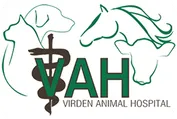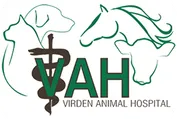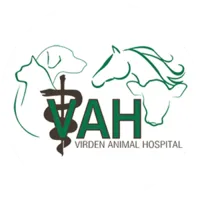Call us today!

- posted: Feb. 28, 2019
Calving is underway for some and others are looking to start over the next few months. Here are a few reminders regarding general herd health to mull over.
NUTRITION:
Through the cold weather at the end of January we ran into some nutritional deficiencies that came to a head due the cold stress experienced during that time. Many producers are getting feed analysis done but may not have a nutritionist or veterinarian comment on planned rations. Remember to have sufficient protein (9% during mid gestation and ramping up to11-12% when lactating) and energy to meet requirements. This is especially important when utilizing straw or poor quality hay and grain or pellets. Book value for cereal straw is in the 4% range. If supplementing with pellets or grain would need minimum 12lb of 20% protein pellet or grain with added supplement to bring protein up to 20%. Remember that would be the approximate concentrate for ideal weather conditions (-10-15 C with no wind chill) and would need to increase in times of sustained cold weather. The next thing to ensure is that the macro minerals- calcium, phosphorus, magnesium and sodium chloride(salt) are in proper quantity and ratio. Straw -grain, cereal silage, green feed and grass hay will need added calcium and magnesium. TRACE MINERALS: Our area tends to be deficient in copper, selenium, manganese, and zinc. Typically, supplementation with 100g/head/ day of a range mineral is most cost effective and will meet requirements. Not all mineral packages are equal so compare labels. If your water or feed is high in sulphates or molybdenum, you may need to look at a chelated mineral package. In these products a percentage (usually in the 30% range) of the mineral is attached to a protein which is not tied up by sulphates or molybdenum thus improving absorption from the intestine. If feeding grain, top dressing the mineral ensures more even intake over free choice. Virden Animal Hospital offers a vitamin-mineral premix which is designed to be top dressed on grain and delivers the required ADE/ copper, zinc, manganese and selenium to cows at a cost of 6 cents /head /day.
CALVING:
Here is a quick refresher on timing of intervention and protocols for common problems. Heifers- Feet should be visualized within 1.5 hr of water bag presentation. Cows- 1 hr. Calf should be on the ground within an hour of feet being visualized. If the animal is not meeting either of these parameters it’s time to investigate. Be sure to restrain the cow, wash and lube gloved arm before internal exam. Determine if presentation is normal. Front or back feet? Look at the cow’s legs to determine what you are feeling. Notice that the first joint above the hoof bend the same whether front or back. It’s the next joint that tells the tale- knee (front leg) or hock (rear leg)? Again, refer to the cow’s legs to notice which way that joint flexes. CHAIN APPLICATION- recommend placing a double loop on each foot. Use a 60 inch chain- one loop above fetlock (first joint above hoof) ½ hitch and second loop between hoof and fetlock. This will decrease the chance of breaking the leg during extraction. PULL OR C-SECTION: If calf is coming front feet first one person pulling on one leg at a time should be able to straighten elbows on both front legs and have head engaged in pelvis. At this point both fetlocks should be close to being out and feet exposed. If this is achievable you are safe to pull. It is preferable to cast the cow so she is lying down to pull. If this is not achievable a c-section is the safer option. Once chest is out get the calf breathing and let the cow give a few pushes to reduce the chance of her prolapsing following extraction of the calf. MALPRESENTATIONS: Backwards- steady progress should be achievable with a puller moderate pressure. If hocks (second joint of back leg) not exposed with moderate pressure with puller-c-section recommended. Breech- backwards calf with back feet towards head of the cow. This can be a tricky one to catch as often water bag is not presented and cow not straining as no part of calf is engaged in the pelvis. Cow may just be off feed or isolated from pen mates. Pelvic exam reveals calf’s tail and or bum. Recommend getting professional help. Uterine torsion(twist)- Again easily missed as cow may act similar to the breech presentation above. Pelvic exam reveals an apparent shelf down to the cow or may not be able to easily pass arm through to feel calf depending on degree of torsion. Take your sleeve on your shirt a twist and try to get your hand out- similar situation. Again, recommend professional intervention. Head back- Heifer- c-section. Cow- May be able to bring head up gently and engage pelvis. Follow same procedure as normal presentation once head engaged. Give yourself 15 minutes to get positioned before seeking help. Foot back- follow same procedure as head back. Consider pain control for calf and cow in assisted calving’s. Meloxicam oral or Metacam injectable are products of choice.
Retained placenta: This is a common problem with twin births. We recommend to administer oxytocin (3ccIM) to the cow following all twin births. Oxytocin can be administered if placenta expulsion is delayed. If the cow has not cleaned within 6 hrs of calving treatment can be started and repeated every 2 hrs for 3-4 treatments. Antibiotics are not indicated unless the cow is lethargic, off feed or running a fever. It is not uncommon for cows with retained placenta to take up to 2 weeks to release placenta. In cases of retained placenta we recommend giving the cow Lutalyse or Estrumate 21 days after calving. For best results be as close to 21 days as possible(range 19-22days post calving). This will put the cow through an estrus cycle and
CALF HEALTH:
If the herd is on an adequate vitamin/mineral program the calf should not require vitamin or selenium injections. If the calf is delayed in receiving colostrum for some reason Vit AD injection could be considered. This calf will also be at higher risk of scours, navel infection and respiratory disease. Calf Scours- There are five common causes of neonatal calf scours: E. coli, Rota virus, Corona virus, cryptosporidia and coccidiosis. Most of these causes can be sorted out by age of calf at time of appearance of scours. Less than 3 days old- E. coli, 5-14 days – viral, 7 or more days cryptosporidia and over 21 days – coccidiosis (often associated rectal hemorrhage). Prevention of all causes of scours starts with as clean a calving area as possible. Avoid wintering animals on same ground used for calving. Periodic clean- out of calving pens during calving is helpful. The cow herd can be vaccinated for E.coli and both viruses to improve colostral protection to the calf. Scour Bos/ Scourguard and Guardian are the 3 scour vaccines we keep stocked. Timing of vaccination and route of administration varies among the products. Intake of 2-3 litres of colostrum in the first 8hrs after birth is important for optimal uptake of protective antibodies. Coccidiosis presents as a hemorrhagic diarrhea which occurs in calves 21 days and older. This disease can cause severe illness and may plague the calf throughout its’ life. Baycox given within the first 2 weeks of life prevents coccidiosis in young calves. This product is a commercially studied product which has been proven safe and efficacious through federal testing prior to its’ release into the Canadian market. It is available in liquid suspension which allows for individual dosing that meets the animal’s requirements according to its weight. Compounded toltrazuril capsules are also on the market. Our concerns regarding the compounded products are :
1. Dosage is not adjustable to meet weight of calf. If product is given at a dose greater than required (ex. 700mg capsule to calf under 100lb) then the withdrawl of this product comes into question.
2. Purity of the product comes into question. The active ingredient for the compounded product typically originates from China. In the past supposed toltrazuril product has come into Canada that could not be identified as toltrazuril. Do you feel comfortable telling consumers that you are administering a product to every meat producing animal on your farm that is entering the food chain a product that has an uncertain purity and withdrawl? Meat consumption is under enough attack without our primary producers bringing question to quality control.
3. Cost of Baycox is on par or less per calf with the compounded product.
Pneumonia- If respiratory disease has been a consistent problem in the past we recommend vaccinating calves as early as a day old intranasally. The intranasal vaccination is much easier on the calves and gives quicker protection over the vaccines administered IM or SC. The protection is somewhat short lived and it is advised to booster with the IM or SC vaccine prior to pasture turn along with a blackleg vaccine.
Office Hours
9:00 am - 12:00 pm
1:00 pm - 5:00 pm
9:00 am - 12:00 pm
1:00 pm - 5:00 pm
9:00 am - 12:00 pm
1:00 pm - 5:00 pm
9:00 am - 12:00 pm
1:00 pm - 5:00 pm
9:00 am - 12:00 pm
1:00 pm - 5:00 pm
Closed
Closed


